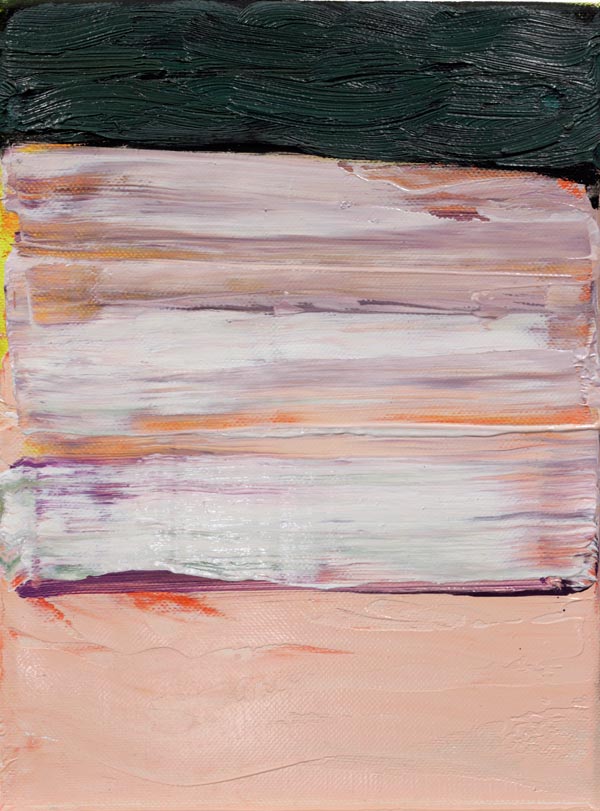About complexity and simplicity
There are works that are formed from two or three postures and have enormous power. In their openness and reduction they can provoke the viewer. Their successful colourfulness, however, invites the viewer to perceive the painter's basic activity. My ideal is this self-confident, experienced realisation, which can manifest itself in a few strokes and is irrevocable in its poetic simplicity. This simplicity makes it clear where the emphasis lies in art and does not give the viewer unnecessary, distracting illusions. I am happy when an idea can be perceived sensually and it is especially the simplicity that manages to refer the viewer to only two or three colour areas. The problems here are of course the critical attitude and the necessary sensitivity, but the viewer must obviously be confronted with this. For me, it is the moment of endurance, the perception of power, to arrive at this clear setting. Saying something in one or two sentences that one could perhaps paraphrase in two pages of text, but which can be understood immediately in a clear setting. The contemporary image is reduced, sets A against B and thus perhaps already reflects our whole being.
On the other hand, complex layers, condensations, overlappings, narratives, journeys emerge, which strongly go beyond the moment, which quite deliberately create colour contrasts, which cannot be left to the moment, cannot only arise now. These pictures are created through the influence of time, of complex time periods, of changes. They unite contradictions, fluctuating positions, different characters, different materialities of colours and form a narrative character: they hide, overlap, arise from deposits of time (as in Per Kirkeby), between different systems (as in Albert Oehlen) or through intellectual strategies (as in Gerhard Richter). The result is symphonies with an enormous density of experiences, which are constantly rearranging themselves to each other, keeping the observer in motion and keeping themselves open. These are the complex, the condensed pictures with ten or thirty layers on which I paint over weeks, which absorb both the malignancy, the mallust, the disappointment, the frustration, the aimlessness into a more complex, superordinate picture of my actions. So the pure painting shows itself both in the moment and in the more complex time-oriented composition. To make the poetic eye of perception comprehensible and reflect the complexity of the world. There is this contradiction and longing for both one and the other, and it is only a moment when I leave the simple and the painting reaches a new more complex status. Somewhere in between there is a melody, a few notes, a two-line, a poem. It is doubt that creates the complex structure and it is the awareness and certainty that sustains and carries the simple.
13.11.13 Axel Plöger

